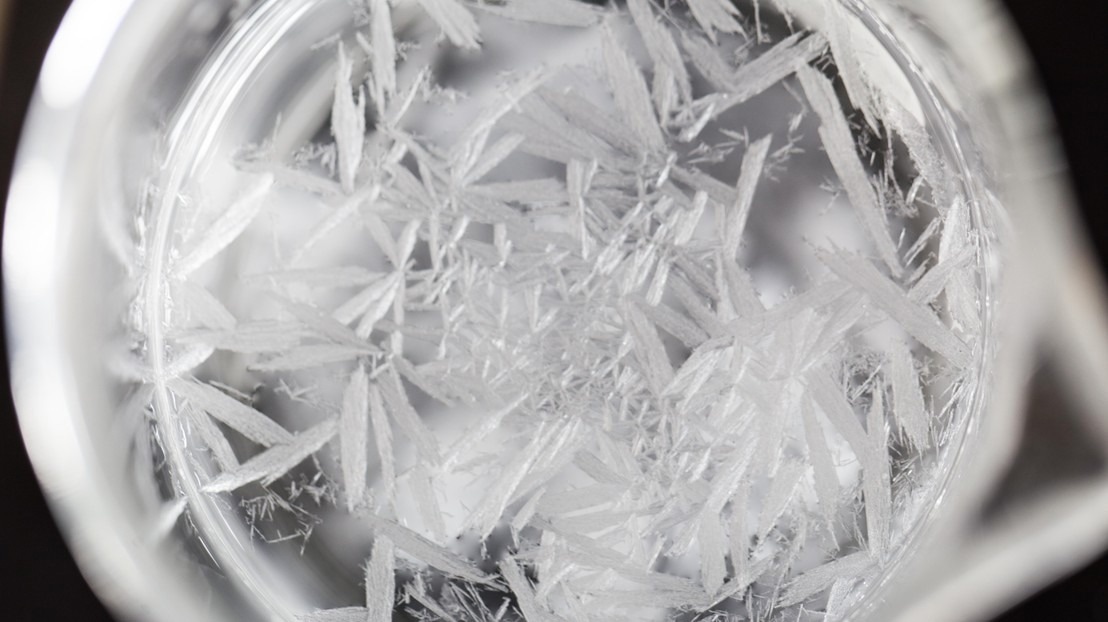EPFL researchers have discovered a method for studying water in “no man’s land,” a subzero temperature range where water crystallizes rapidly. Historically, scientists have been hampered by their inability to gain access to “no man’s land,” but a revolutionary technology may change that.

Image Credit: iStock photos
Water is one of the most important and prevalent compounds on the planet. It has shaped the planet’s makeup and geology, controls its climate and weather patterns, and is the foundation of all life, covering more than 70% of its surface.
But water is also strange. It has a number of unusual features, over seventy of which scientists have identified so far. Several ideas have been proposed to explain these anomalies, but experimental confirmation is challenging.
One of the difficulties is that this would necessitate examining water at temperatures ranging from 160 K to 232 K (–113 °C to –41 °C), an infamous temperature region known as “no man’s land” where water crystallizes so quickly that scientists have been unable to investigate its properties.
But why would anybody want to cool water to such low temperatures? Because when water is cooled far below its freezing point, it becomes “supercooled,” with unusual and fascinating features; for example, it can continue in liquid form under certain conditions but rapidly freeze when disturbed or exposed to specific substances.
Supercooled water is made by cooling liquid water below the freezing point while using methods to keep it from crystallizing or at least slowing it down. Even with these tactics, though, crystallization in “no man’s land” is still too fast.
An experiment to systematically probe the structure of water across so-called 'no man’s land’ has remained elusive for decades.
Ulrich Lorenz, Professor, School of Basic Sciences, EPFL
Researchers led by Lorenz have now discovered a means to accomplish just that. The researchers devised a method for swiftly preparing deeply supercooled water at a predetermined temperature and probing it with electron diffraction before it crystallizes.
We have still not fully understood why water is an anomalous liquid, despite this topic being hotly debated for over forty years. The answer appears to lie in ‘no man’s land’. But because of fast crystallization, any measurement over the full temperature range has not been possible. We do this for the first time. This brings us closer to solving this long-standing mystery.
Ulrich Lorenz, Professor, School of Basic Sciences, EPFL
The investigations were carried out using a sophisticated time-resolved electron microscope that the scientists custom developed in their facility. They prepared the supercooled water at a specific temperature and directly probed it before crystallization began.
They did this by cooling a sheet of graphene to 101 K and depositing a thin coating of amorphous ice on top. They then used a microsecond laser pulse to melt the film locally to acquire water in “no man’s land,” and then an intense, high-brightness electron pulse to capture a diffraction pattern.
Water’s structure evolves smoothly as it cools from ambient temperature to cryogenic levels, according to the experts. At temperatures slightly below 200 K (approximately –73 ºC), the structure of water begins to resemble that of amorphous ice—a type of ice in which water molecules are disorganized, as opposed to the tidy crystalline ice.
The fact that the structure evolves smoothly allows us to narrow down the range of possible explanations for the origin of water anomalies. Our findings and the method we have developed bring us closer to unriddling the mysteries of water. It is difficult to escape the fascination of this ubiquitous and seemingly simple liquid that still has not given up all of its secrets.
Ulrich Lorenz, Professor, School of Basic Sciences, EPFL
Journal Reference
Krüger, C. R., et al. (2023). Electron diffraction of deeply supercooled water in no man’s land. Nature Communications. doi.org/10.1038/s41467-023-38520-7.